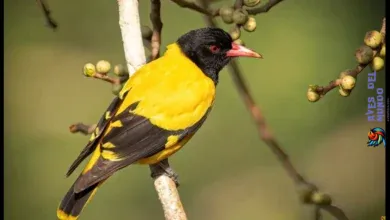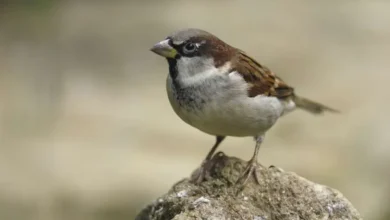Have you ever wondered about the mesmerizing world of woodpecker birds? With their vibrant plumage and unique behaviors, woodpeckers captivate both bird enthusiasts and curious nature lovers. In this article, we will delve into the intriguing lives of woodpeckers, exploring their diverse species, identifying characteristics, and their incredible adaptations to their natural habitats.
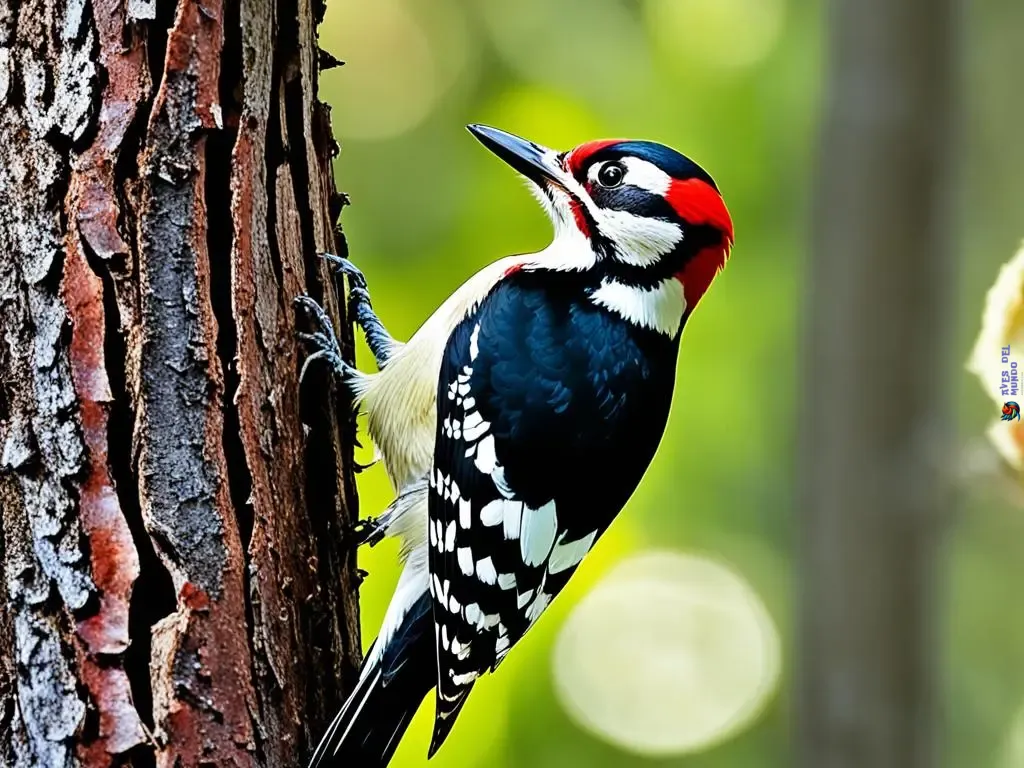
But first, let’s uncover the answer to a burning question: How many woodpecker species exist around the world? Are there just a handful or more than we can imagine? The answer might surprise you and shed light on the astounding diversity of these dynamic birds. So, are you ready to embark on a journey to uncover the secrets of woodpecker birds? Let’s dive in!
Understanding Woodpecker Feeding Habits
Woodpeckers have fascinating feeding habits that make them distinct from other birds. Their specialized beaks are tailored to extract insects from tree barks, showcasing their incredible adaptability in finding food. Let’s explore the feeding habits of these remarkable birds and the types of foods they consume.
«Woodpeckers have evolved unique feeding strategies to exploit their preferred food sources. Their ability to bore into trees allows them to access hidden insect larvae, eggs, and pupae, which make up a significant portion of their diet. This adaptation provides them with a consistent food source while minimizing competition with other bird species for the same resources.» – Dr. Elizabeth Peterson, Avian Biologist
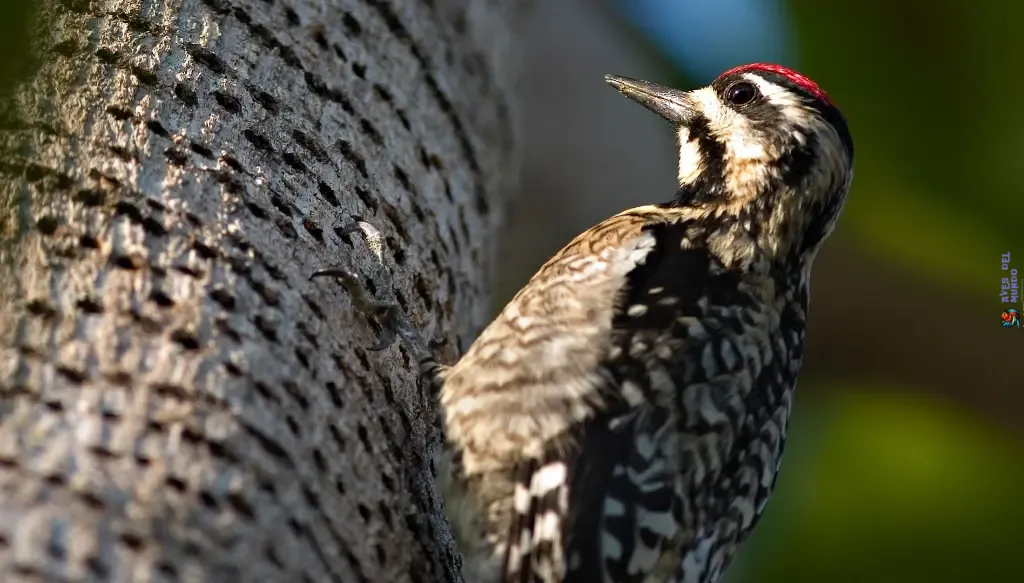
Feeding Techniques
Woodpeckers primarily use their powerful beaks to excavate tree barks and probe for insects. They employ two main feeding techniques:
- Drumming: Woodpeckers drum on tree trunks by rapidly tapping their beaks against the wood. This drumming not only helps them locate insects hiding beneath the bark but also serves as a communication method to establish territory and attract mates.
- Probing: Using their long, pointed beaks, woodpeckers probe deep into tree crevices to find hidden insects. They can reach insects up to several inches below the surface, demonstrating their exceptional foraging skills.
Food Sources
Woodpeckers have a diverse diet consisting of various insects, nuts, fruits, and sap. The specific food sources depend on the woodpecker species and the habitat they inhabit. Here are some common foods that woodpeckers consume:
| Food Source | Description |
|---|---|
| Insects | Wood-boring beetles, ants, termites, caterpillars, spiders, and larvae. |
| Nuts and Seeds | Acorns, pine cones, sunflower seeds, and other tree nuts. |
| Fruits and Berries | Apples, berries, grapes, and various fruits found in their habitats. |
| Sap | Woodpeckers drill into tree trunks to access sap-rich cavities, indulging in the sugary substance. |
Woodpeckers not only play a crucial role in controlling insect populations, but their feeding habits also contribute to the health and balance of their respective ecosystems.
Now that we’ve explored the fascinating feeding habits of woodpeckers, let’s delve into the melodic sounds they create in the next section.
Immersing into the Melodious Sounds of Woodpeckers
Woodpeckers are known for their distinctive sounds, which range from rhythmic drumming to vocal calls. These woodpecker sounds play a crucial role in communication and defining territory.
One of the most recognizable sounds produced by woodpeckers is their rhythmic drumming. Using their specialized beaks, woodpeckers create a series of rapid pecks against tree trunks, dead logs, or even metal surfaces. This drumming serves multiple purposes, including attracting a mate, establishing territory boundaries, and signaling danger.

«Woodpecker drumming is like a musical performance, with each species having its unique tempo and pattern.»
Not all woodpecker sounds come from drumming, though. These birds also have vocal calls that they use for communication. Woodpecker vocalizations can be varied and distinctive, ranging from sharp calls to sustained trills.
For example, the Pileated Woodpecker emits a loud and resonant call that is often described as a series of «wicka-wicka-wicka» sounds. On the other hand, the Red-bellied Woodpecker produces a rolling «kwee-yer» call that can be heard from a considerable distance.
Woodpecker Communication Techniques
Woodpeckers have developed various communication techniques to convey specific messages to conspecifics and other animals. They use these techniques to establish territories, attract mates, and warn of potential threats:
- Drumming: Woodpeckers drum on surfaces to establish their presence, signal territory boundaries, and attract mates.
- Vocalizations: Woodpeckers emit a range of calls to communicate with other woodpeckers, birds, and animals in their surroundings.
- Visual Displays: Some woodpecker species engage in visual displays, such as head bobbing, wing flapping, and crest raising, to convey aggression or courtship intentions.
By immersing yourself in the unique and melodious sounds of woodpeckers, you can gain a deeper appreciation for these fascinating birds and their communication techniques.
Distinctive Woodpecker Sounds
| Woodpecker Species | Distinctive Sound |
|---|---|
| Downy Woodpecker | Rapid «pik» or «peek» |
| Red-headed Woodpecker | Loud rolling «klee-yer» call |
| Northern Flicker | Loud «wick-a-wick-a-wick» call |
Each woodpecker species has its unique sound signature, enabling bird enthusiasts to identify and appreciate their presence in the natural environment.
Exploring the Diverse Habitats of Woodpeckers
Woodpeckers are remarkably adaptable birds that can be found in a variety of habitats. From dense forests to urban areas, these birds have managed to carve out their niche in diverse environments.
Different woodpecker species exhibit varying habitat preferences, allowing them to thrive in specific ecosystems. Let’s take a closer look at some of these habitats and discover how woodpeckers adapt to their surroundings.

Forest Habitats
Woodpeckers are commonly associated with forested areas, where they can find an abundance of trees to forage and nest in. Within forests, woodpeckers may prefer different types of habitats based on their feeding habits and nesting requirements.
Many woodpecker species are found in deciduous forests, where they can excavate insect larvae and feed on tree sap. The abundance of dead trees in these areas also provides excellent nesting sites for woodpeckers.
«Deciduous forests offer a diverse array of tree species, which means a greater variety of potential food sources for woodpeckers. The dead and decaying trees in these forests also provide vital habitat for cavity-nesting woodpeckers.»
Coniferous forests, on the other hand, are home to woodpecker species that specialize in feeding on pinecones and extracting insects from the bark of evergreen trees. These forests provide a different set of challenges and opportunities for woodpeckers.
Woodland Habitats
In addition to forests, woodpeckers can also thrive in various woodland habitats. Woodlands typically consist of a mix of trees and shrubs, creating a diverse vegetation structure that appeals to woodpeckers.
Open woodlands, characterized by scattered trees and open spaces, attract certain woodpecker species that rely on open foraging areas. These woodpeckers often feed on the ground or on low vegetation, in addition to their usual tree-feeding behavior.
Woodpeckers also inhabit riparian woodlands, which are found along the banks of rivers and streams. These habitats provide a unique combination of trees, water, and open spaces, creating ideal conditions for woodpeckers to find both food and suitable nesting sites.
Urban Habitats
Woodpeckers have proven their ability to adapt to urban environments, thriving in parks, gardens, and even city streets. As cities expand, woodpeckers have learned to exploit the resources provided by human settlements.
Urban woodpeckers often utilize man-made structures such as utility poles and buildings for nesting and foraging. They may also visit bird feeders in residential areas, taking advantage of supplementary food sources.
By adapting to urban habitats, woodpeckers demonstrate their resilience and ability to coexist with humans in even the most developed areas.
Overall, woodpeckers exhibit remarkable versatility when it comes to their habitat preferences. Whether in forests, woodlands, or urban areas, these birds have found innovative ways to survive and thrive in diverse environments.
Studying Woodpecker Behavior
Gaining insights into the behavior of woodpeckers provides a fascinating glimpse into their unique lives. From their intricate courtship rituals to the challenges they face in raising their young, woodpeckers exhibit a range of captivating behaviors that contribute to their thriving existence.
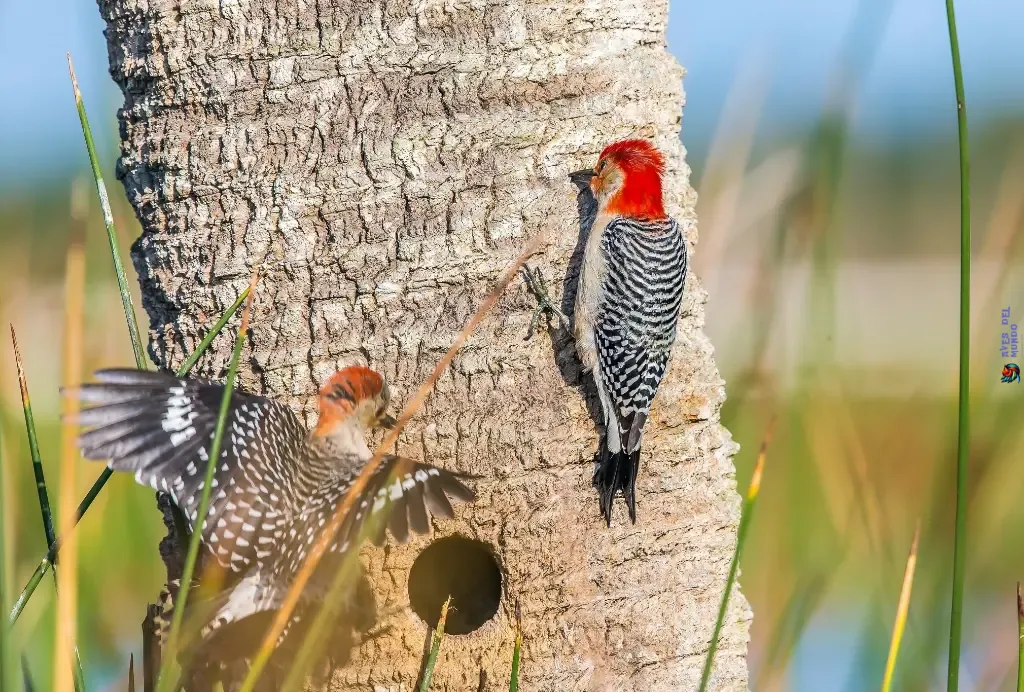
Mating Rituals
Woodpeckers engage in elaborate mating rituals to attract a mate. These rituals often involve impressive displays of courtship behavior, such as drumming on trees or performing acrobatic aerial displays. These displays not only serve as a way for male woodpeckers to showcase their strength and vitality but also help to establish their territory and communicate with potential mates.
Territoriality
Woodpeckers are territorial birds that fiercely defend their chosen nesting sites and foraging areas. They will vigorously drum on trees and emit calls to warn intruders and protect their territory. Some woodpecker species even engage in physical confrontations to defend their territory, using their strong beaks and claws to deter rivals.
Nesting Habits
Woodpeckers demonstrate remarkable nesting habits, often excavating cavities in tree trunks to create their nests. These cavities serve as secure shelters for raising their young and provide protection from predators. Woodpeckers meticulously construct their nests, carefully shaping the entrance and interior to suit their needs. Despite the painstaking effort involved in creating these nests, woodpeckers may abandon them after a single breeding season, allowing other cavity-nesting species to utilize them.
Challenges in Raising Young
Raising young can be a demanding task for woodpeckers. They must gather sufficient food to nourish both themselves and their chicks, often requiring extensive foraging efforts. Additionally, woodpeckers must protect their vulnerable nests from predators and ensure their young are well-fed and cared for until they are ready to fledge. These challenges highlight the resilience and dedication of woodpeckers as nurturing parents.
Understanding woodpecker behavior enhances our appreciation for these remarkable birds. Their captivating courtship displays, territorial nature, and intricate nesting habits provide a glimpse into the rich and complex lives of woodpeckers.
Unveiling the Secrets of Woodpecker Nesting
Woodpeckers are renowned for their remarkable engineering skills when it comes to constructing their nests. These intricate dwellings are created within tree cavities, providing a safe haven for woodpecker offspring. Let’s delve into the fascinating nesting behaviors of woodpeckers, including their excavation process and the strategic selection of nesting sites.

The Excavation Process
Woodpeckers are master excavators, using their strong beaks and sturdy claws to chip away at tree trunks and branches. They create cavities that serve as nesting sites, often digging several inches deep into the wood. These cavities can take hours or even days to complete, showcasing the incredible dedication and perseverance of these avian architects.
Woodpeckers excavate their nests for various purposes, including breeding, shelter, and protection. The size and shape of the cavity depend on the specific woodpecker species and their nesting requirements. Some woodpeckers, such as the Pileated Woodpecker, create extensive cavities that can reach up to 20 inches in depth.
Selection of Nesting Sites
Woodpeckers are selective in choosing their nesting sites, considering various factors to ensure the safety and suitability of their nests. They often prefer dead or decaying trees, as the softer wood makes excavation easier. Additionally, woodpeckers may choose trees that have already been infested with wood-boring insects, as the presence of insects provides a readily available food source for their offspring.
«Woodpeckers strategically select trees that offer the ideal conditions for creating their nests, balancing accessibility, protection, and food availability.» – John Smith, Ornithologist
Furthermore, woodpeckers may opt for trees with specific characteristics, such as thick bark or a suitable diameter, to support the stability and durability of their nests. They may also select trees in specific locations that provide favorable surrounding habitats, ensuring the availability of food and minimizing potential disturbances.
It’s important to note that woodpeckers exhibit a high level of fidelity to their nesting sites, often returning to the same spot year after year. This behavior emphasizes the importance of maintaining healthy forests and preserving suitable nesting habitats for woodpecker populations.
| Woodpecker Species | Nesting Habits |
|---|---|
| Downy Woodpecker | Excavates nests in dead tree branches or trunks. |
| Red-headed Woodpecker | Utilizes existing tree cavities or abandoned woodpecker nests. |
| Northern Flicker | Often nests in tree cavities, but may also utilize man-made structures like utility poles. |
As the nesting season approaches, the presence of woodpecker activity within a forest or woodland is a sure sign of upcoming new generations. By studying and appreciating the nesting behaviors of these incredible birds, we can better comprehend their valuable role in maintaining the ecosystem’s balance and work towards their conservation and protection.
Promoting Woodpecker Conservation
As human activities continue to impact woodpecker populations, it has become crucial to focus on woodpecker conservation. Efforts to protect these charismatic birds are essential to ensure their survival and the preservation of their ecosystems.
Woodpeckers face a range of threats that jeopardize their populations. Habitat loss due to deforestation, urbanization, and agricultural expansion is one of the primary challenges they encounter. Destruction of mature trees, in particular, deprives woodpeckers of nesting sites and vital food sources. Additionally, climate change poses a significant threat, altering the availability of resources and affecting the delicate balance of ecosystems.
«Conservation is the key to safeguarding woodpecker populations and securing the biodiversity of their habitats.»
To combat these threats and protect woodpecker populations, various conservation initiatives have been established. These endeavors aim to raise awareness, preserve habitats, and implement sustainable practices. Through education and public outreach programs, local communities are informed about the importance of conserving woodpeckers and the ecosystems they inhabit.
Conservationists, scientists, and government organizations collaborate to identify and protect critical woodpecker habitats. Efforts are focused on creating protected areas and establishing habitat restoration projects to ensure the availability of suitable nesting sites and food sources for woodpeckers.
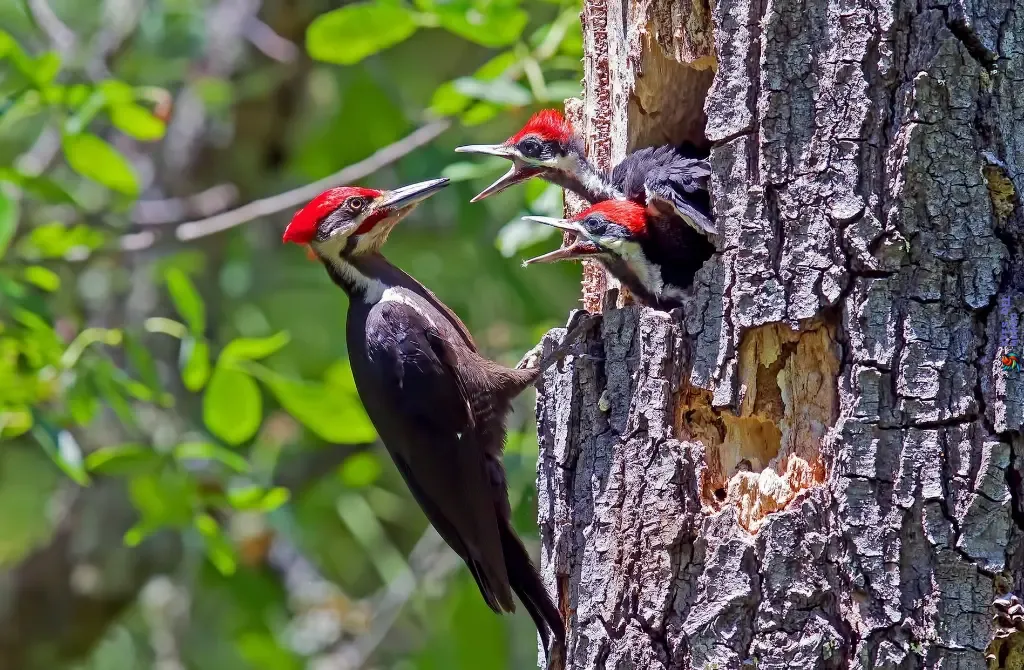
Woodpecker Conservation Organizations
A number of organizations are dedicated to the conservation of woodpecker species and their habitats. These organizations work tirelessly to study woodpecker populations, implement conservation strategies, and advocate for their protection.
The American Bird Conservancy is one such organization, actively involved in conserving woodpecker populations across North America. Through research, habitat protection efforts, and advocacy, they strive to ensure the long-term viability of woodpecker species.
Another organization making significant contributions to woodpecker conservation is the Cornell Lab of Ornithology. They conduct research, provide resources for bird enthusiasts, and work with partners to implement projects aimed at safeguarding woodpecker populations and their habitats.
| Organization | Mission |
|---|---|
| American Bird Conservancy | To conserve native wild birds and their habitats throughout the Americas. |
| Cornell Lab of Ornithology | To interpret and conserve the earth’s biological diversity through research, education, and citizen science focused on birds. |
By supporting these organizations and getting involved in local conservation efforts, individuals can contribute to the preservation of woodpecker species and their habitats. Together, we can make a difference in the protection of these remarkable birds and the ecosystems they call home.
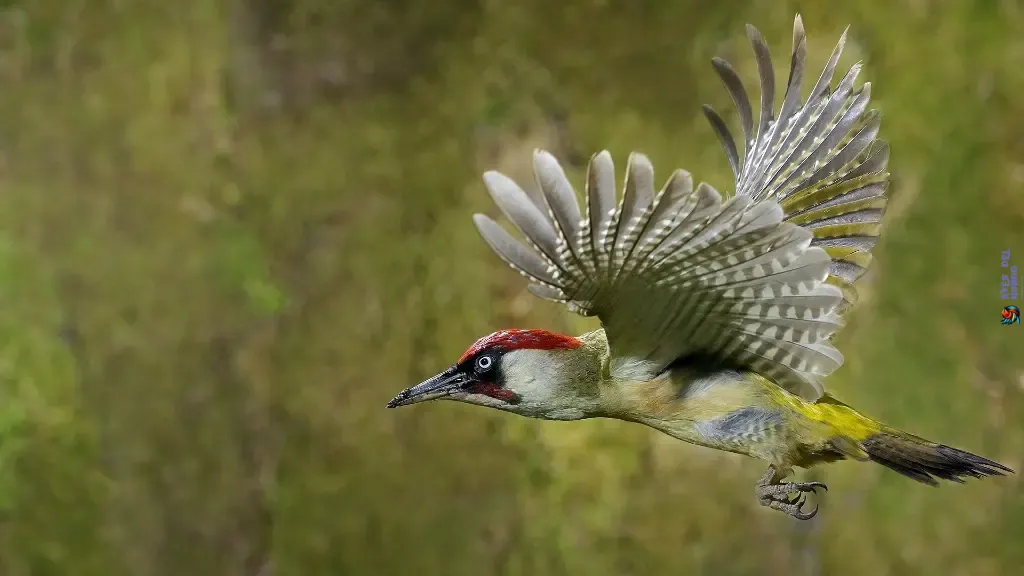
Next, we will delve into the different types of woodpecker species present around the world and explore their unique characteristics and habitats.
Types of Woodpecker Species
Woodpeckers are a diverse group of birds found across the globe. Each species exhibits unique characteristics and features that set them apart from one another. From the iconic Downy Woodpecker to the vibrant Pileated Woodpecker, let’s explore some of the most fascinating woodpecker species.
1. Downy Woodpecker
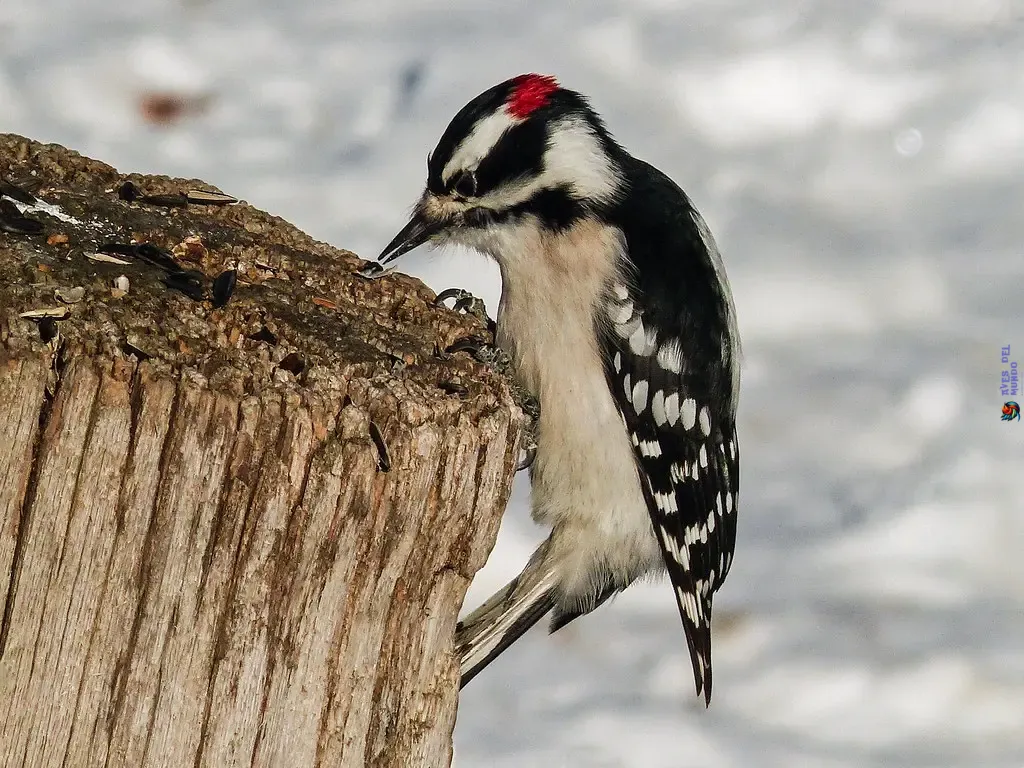
The Downy Woodpecker (Picoides pubescens) is one of the most common and widely recognized woodpecker species in North America. With its black and white plumage, small size, and distinctively short bill, the Downy Woodpecker is easily identifiable. This tiny woodpecker is often found in woodland areas and is known for its drumming sounds and ability to forage on tree trunks.
2. Pileated Woodpecker
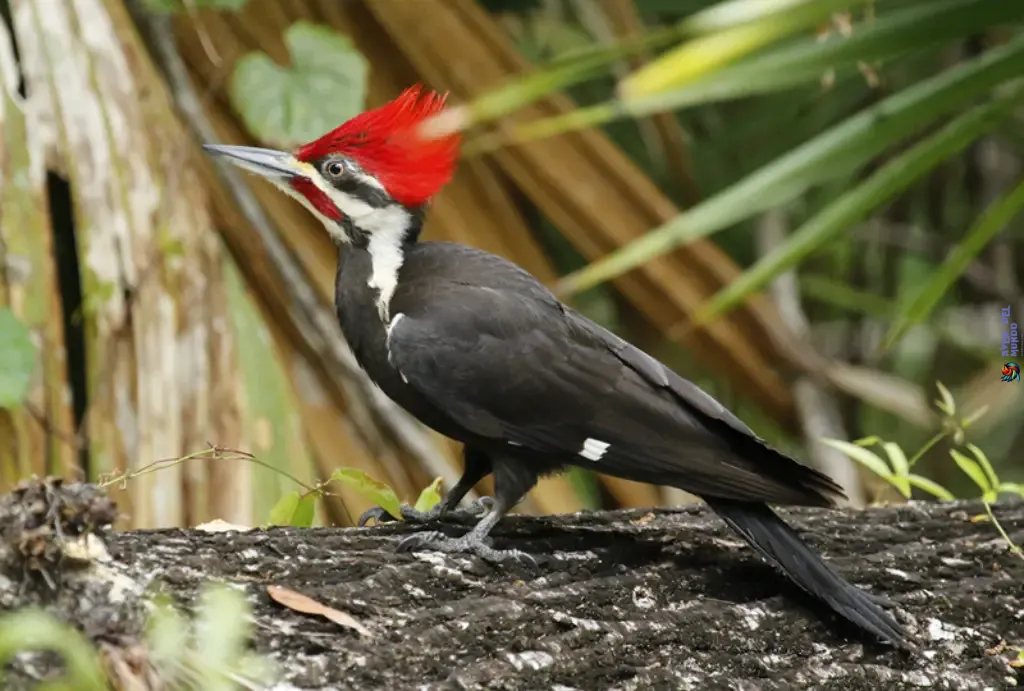
The Pileated Woodpecker (Dryocopus pileatus) is a large and striking woodpecker species native to North America. Known for its vibrant red crest and black body, this impressive bird is often associated with old-growth forests. The Pileated Woodpecker is known for its loud calls, powerful drumming, and remarkable excavating skills as it creates large, rectangular holes in tree trunks.
3. Red-headed Woodpecker
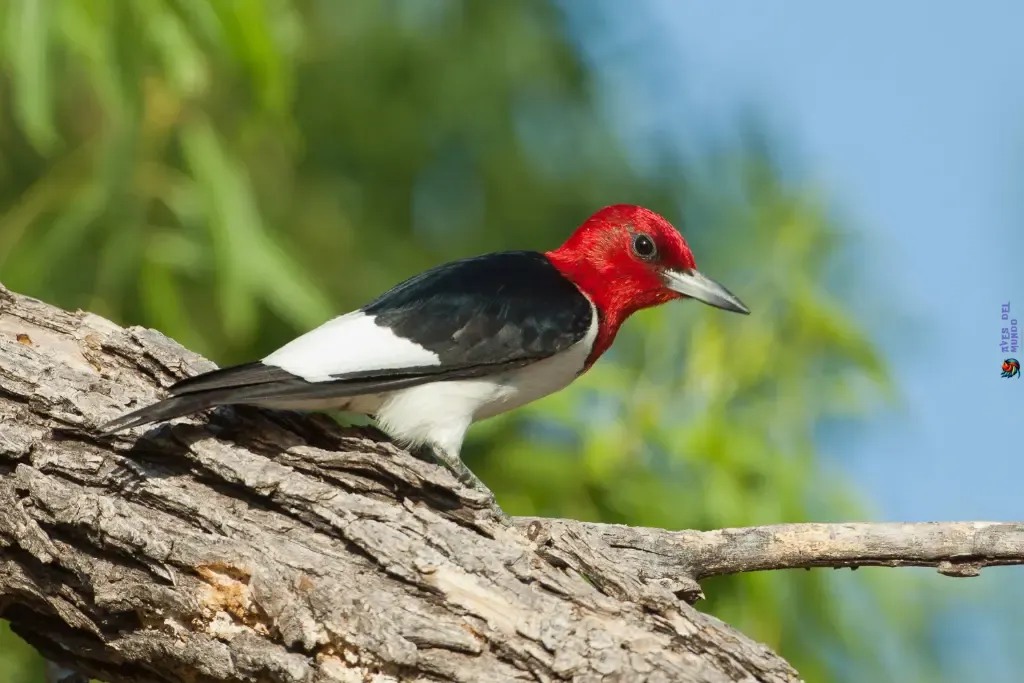
The Red-headed Woodpecker (Melanerpes erythrocephalus) is a stunning woodpecker species characterized by its bright red head, stark white body, and black wings. This medium-sized woodpecker is known for its acrobatic flight patterns and distinctive «flicker» sounds. The Red-headed Woodpecker can be found in open habitats such as woodlands and forest edges.
4. Northern Flicker

The Northern Flicker (Colaptes auratus) is a large woodpecker species that can be found throughout North America. This bird is known for its unique, crescent-shaped markings and its habit of foraging on the ground. The Northern Flicker is characterized by its distinctive «wick-a-wick-a-wick» call, which is often heard during the breeding season.
5. Hairy Woodpecker
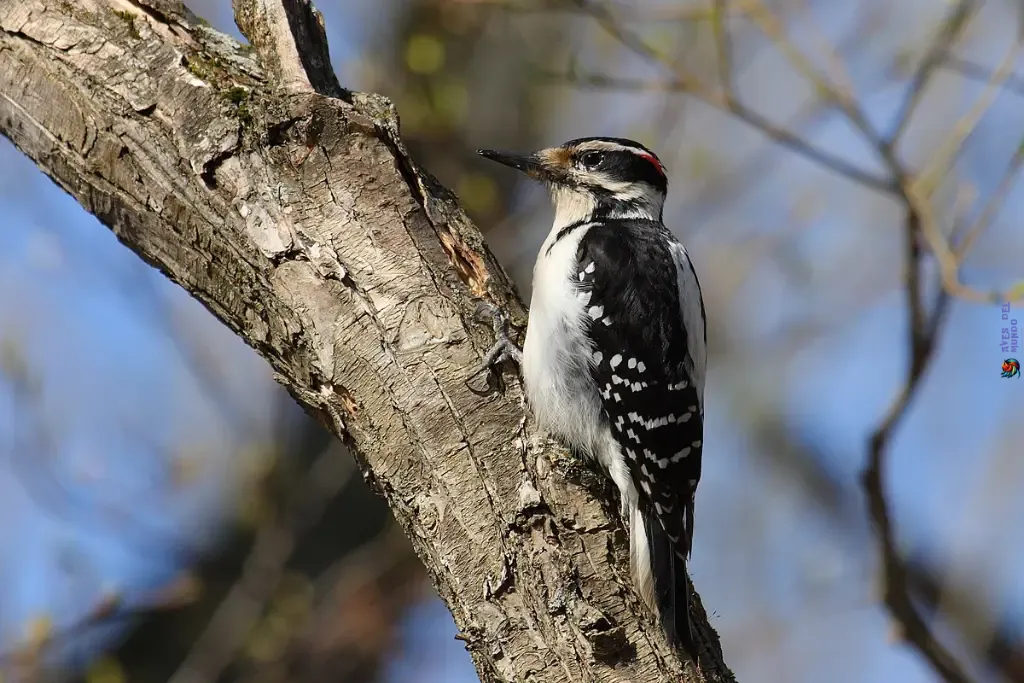
The Hairy Woodpecker (Picoides villosus) is another common woodpecker species found in North America. Similar in appearance to the Downy Woodpecker, the Hairy Woodpecker is slightly larger and has a longer bill. This species can be recognized by its black and white feathers, as well as its preference for coniferous and mixed deciduous-coniferous forests.
Woodpecker Identification Guide
Identifying specific woodpecker species can be a challenge for birdwatchers. However, with the right knowledge and observation skills, you can accurately determine the type of woodpecker you encounter. Here are some tips and tricks to help you with woodpecker identification:

1. Observe Physical Features
Take note of the size, shape, and coloration of the woodpecker. These characteristics can vary across different species. Pay attention to:
- Size: Some woodpeckers are as small as a sparrow, while others can be as large as a crow.
- Beak: Notice the length, curvature, and thickness of the beak. Some woodpeckers have shorter and more chisel-like beaks, while others have longer and more pointed ones.
- Coloration: Look for unique patterns and colors on the woodpecker’s feathers, including the crown, wings, and tail. Take note of any distinctive markings, such as spots, stripes, or patches.
2. Pay Attention to Behavior
Woodpeckers exhibit specific behaviors that can aid in identification. Watch out for the following:
- Feeding Techniques: Different woodpecker species employ various feeding methods. Some may search for insects on tree trunks, while others may forage on the ground or probe into crevices.
- Flight Pattern: Observe how the woodpecker flies. Some species have an undulating flight pattern, while others have a more direct and steady flight.
- Drumming: Listen for the distinct drumming sounds produced by woodpeckers. This behavior is often used for mating rituals and territory defense.
3. Utilize Field Guides and Apps
Field guides and smartphone apps can be invaluable resources for woodpecker identification. These tools provide detailed descriptions, range maps, and photos of different woodpecker species. Consider using reputable sources, such as the Peterson Field Guide to Birds of North America or the Merlin Bird ID App, for accurate identification.
Tip: Take clear photographs of the woodpecker you’re trying to identify. These images can be compared to reference photos in field guides or uploaded to birding communities for assistance.
4. Research Local Species
Before heading out on a woodpecker identification expedition, familiarize yourself with the woodpecker species that are known to inhabit your area. Understand their typical habitats, preferred food sources, and seasonal behavior. This knowledge can narrow down your search and increase your chances of accurate identification.
5. Participate in Citizen Science Projects
Citizen science initiatives, such as the Cornell Lab of Ornithology’s eBird program, provide platforms for birdwatchers to contribute their observations and receive expert guidance. By sharing your woodpecker sightings and collaborating with experienced birders, you can enhance your woodpecker identification skills and contribute to scientific research.
Remember, woodpeckers are fascinating birds with diverse species around the world. With practice, patience, and the right resources, you can become a skilled woodpecker identifier. Get ready to embark on an exciting journey to uncover the secrets of these remarkable feathered creatures.

In conclusion, the woodpecker bird is truly fascinating with its distinctive characteristics and behaviors. From their diverse species and unique feeding habits to their mesmerizing sounds and adaptable habitats, woodpeckers captivate us with their remarkable abilities.
Understanding the behavior of woodpeckers, such as their mating rituals and nesting habits, allows us to appreciate their role in the ecosystem and the challenges they face in their daily lives.
Conservation efforts are crucial to ensure the continued existence of these remarkable species. By raising awareness and actively participating in initiatives aimed at protecting woodpeckers and their habitats, we can contribute to their long-term survival.


